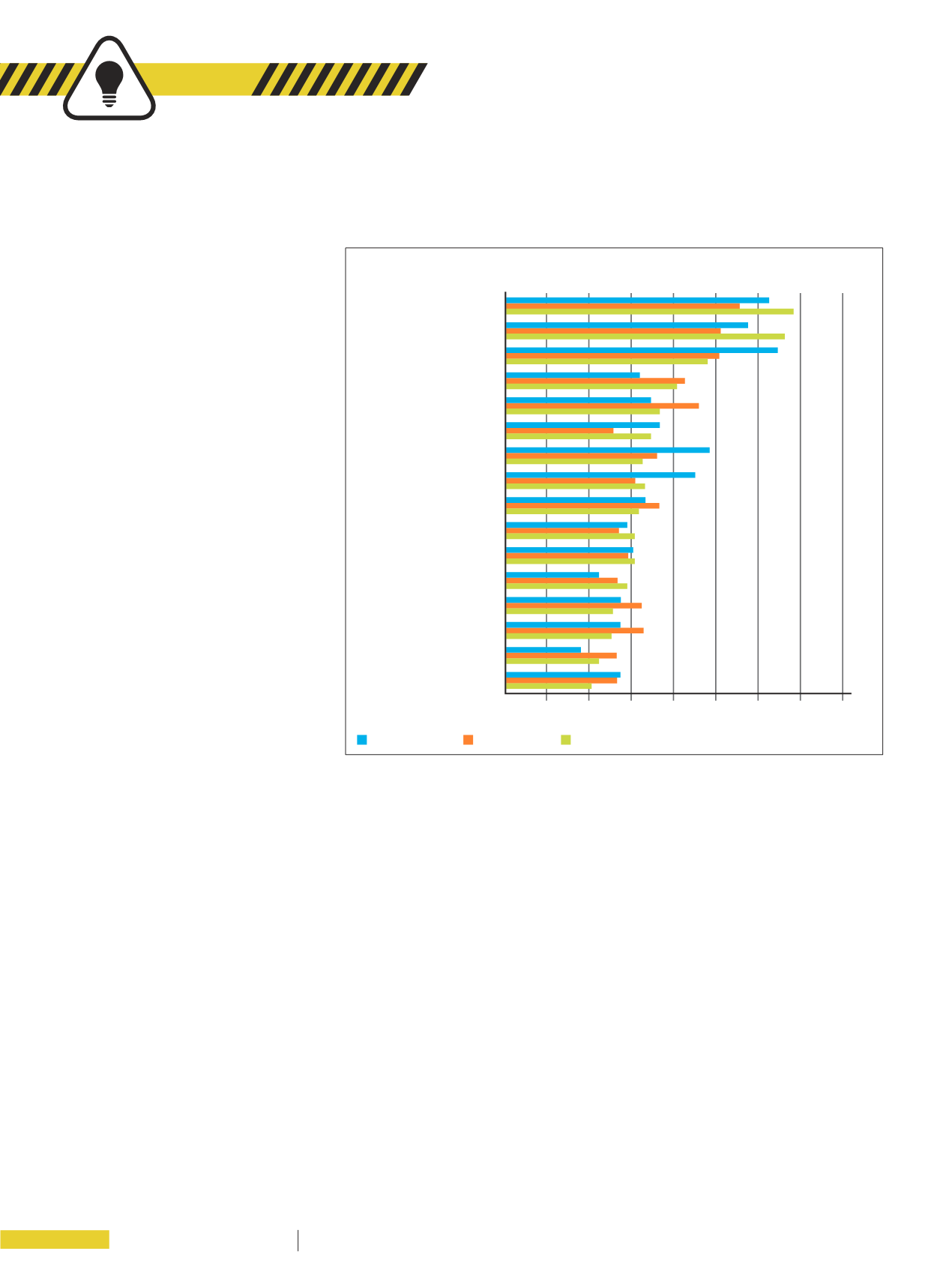

9 4
P L UMB I N G CO N N E C T I O N
A U T UMN 2 0 15
TIPS
W
ith the
Future Forecasts:
Construction and Property
Services Skills
report and the
Construction and Property Services
Industry Skills Council (CPSISC)
e-scan
predicting an upturn in the construction
market, your business will need to be agile
enough to take advantage of new projects.
On the flip side, the Master Builders
Australia graph on national availability
of labour provides a good picture of
the difficulty in finding skilled labour.
This means it’s getting tougher
for businesses to ensure they are
structured appropriately.
The e-scan reiterates its 2013 emphasis
on the need to replace skilled, older
workers, which in turn puts pressure
on businesses to invest time in bringing
young people up to speed.
It means that the younger worker
will not provide as big a return on
investment, or as quickly, as a fully
qualified or fourth year apprentice in
the short term - but the longer we put
off employing younger apprentices, the
worse it will become in terms of having
fully qualified workers available.
So given the difficulty in finding skilled
labour, what should a business be doing
differently – or more of?
Over the last 31 years, our experience is
that the media businesses use to attract
prospective apprentices to job vacancies
has changed – except the most successful
way, that is, through personal contacts
and referrals. And the way job seekers
are finding out about work is also through
personal contacts.
WHERE YOUNG PEOPLE ARE LOOKING
FOR WORK
In a recent survey of the apprentices
we employ and place with businesses
across Australia, most young people are
still saying they just don’t read print news
– but they do use their networks to help
them decide on their career.
Peer endorsement is really important
and can affect the number of applicants
you’re getting for your job vacancies.
35.56% of our own apprentices use
Facebook all the time; 25.94% are using it
often. On top of this, there are all the other
social media networks with varying levels
of popularity. Social networking is the
basis for their peer endorsement.
The
UK Commission for Employment
and Skills
, published in November 2014,
provides insight into the thoughts and
behaviour of over 18,000 employers
across the UK as they make decisions
about how to engage with training
providers, schools, colleges and
individuals in the wider skills system, to
get the skills they need.
According to the UK survey, around
three quarters of employers used free
private recruitment channels such as
word of mouth, their own websites,
internal notices or other free websites.
Word of mouth continues to be the most
commonly used private recruitment
channel, used by 30% of employers.
Since 2012, there’s been an increase in
the use of social media as a recruitment
channel (from 3% to 7%), but this remains
substantially less used than other more
established ‘private free’ channels.
28% of those UK employers used work
experience as a recruitment tool. They
give a young person the opportunity to
undertake work experience while they’re
still at school, and then pick the person
that works out best for their business.
So if you are to ‘fish where the fish are’
when looking for new staff, it’s pretty
clear it’s a good idea to drop the word
HIRING IN THE 21ST CENTURY
Linda Nall
discusses the state
of the labour market – and what
works best when you’re looking
for the right people for the job.
The National Availability of Labour survey reiterates the need to replace skilled,
older workers.
Project Manager
Foreman / Supervisor
Site Manager
Carpenters
Bricklayers
Steel Fixers
Office Staff
Concreters
Wall and Floor Tilers
Electricians
Plaster Fixers
Building Consulatants
Labourers
Roof Tilers
Scafolders
Painters
0
5%
10%
15%
20% 25% 30% 35% 40%
NATIONAL AVAILBILITY OF LABOUR
(degree of difficulty in finding skilled labour - higher scores + more difficulty)
SOURCE: Master Builders Of Australia
March Qtr ‘13 June Qtr ‘13 Sept Qtr ‘13
















